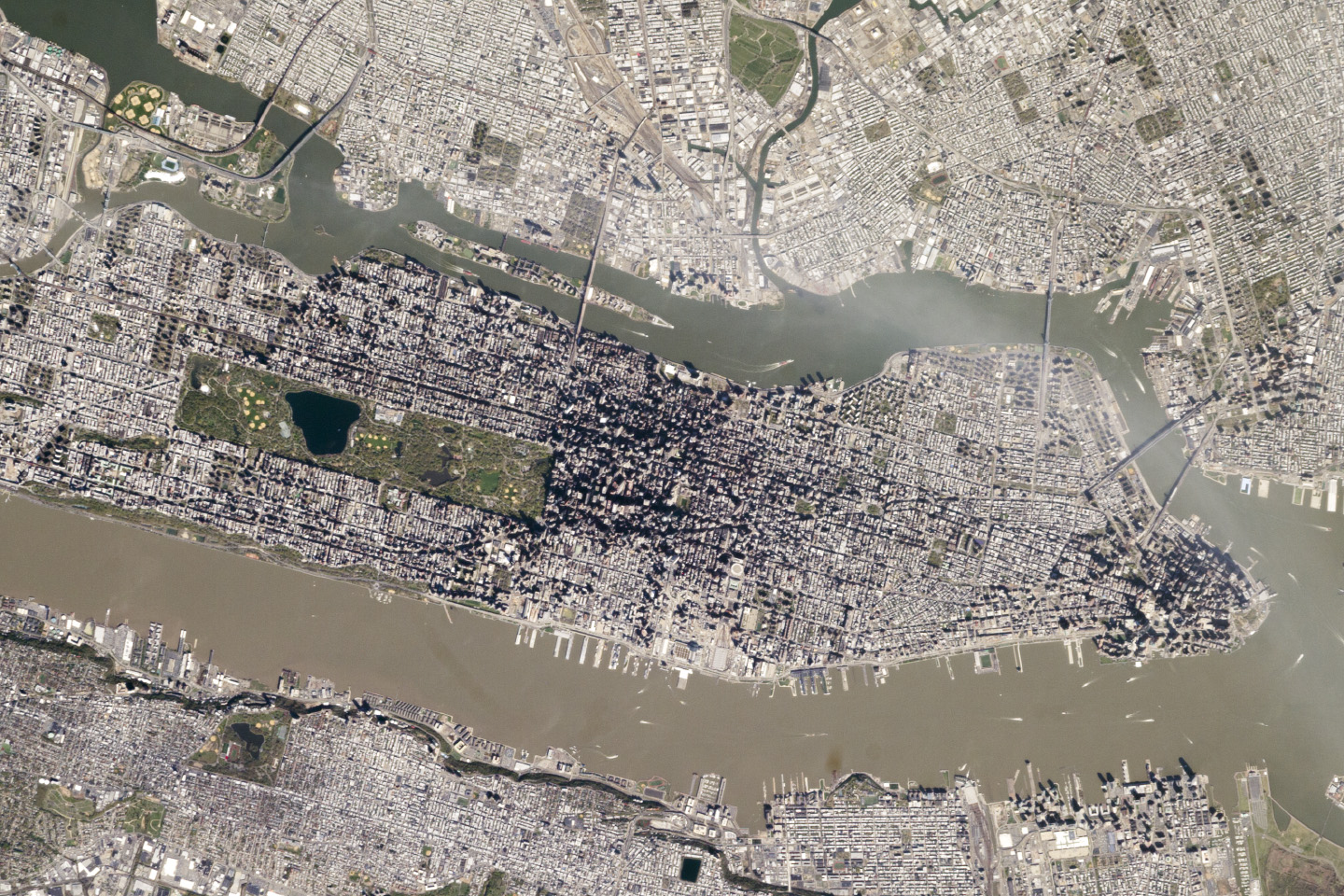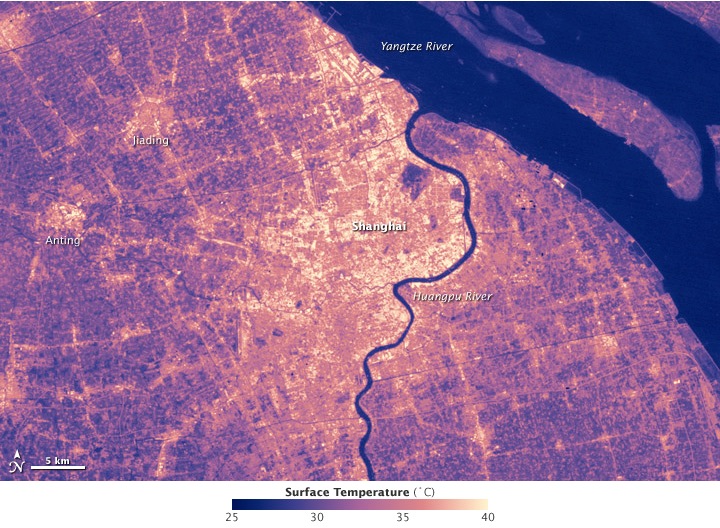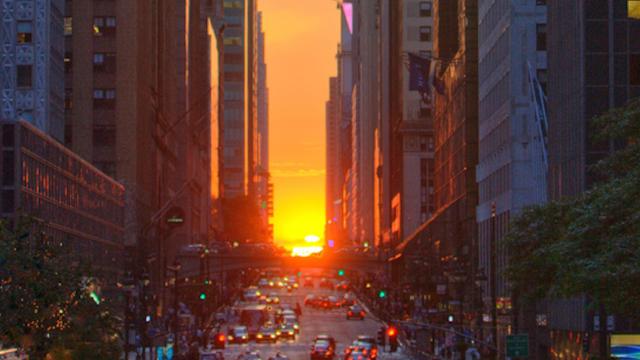The breezy dark corridors between a city’s tallest buildings seem like shady respites from the blistering summer sun. But it turns out those shadowy urban canyons are actually making your city more hell-like. NASA released some images today shot from the International Space Station which help to illustrate why.

The photos show the shadows created by taller buildings, which you can identify by the darker areas in Midtown and Lower Manhattan. Of course it’s easy to understand how areas covered in asphalt and cement warm up the city faster than ones covered in grass or water. But what you might not know is that instead of creating cool, shaded canyons between those tall buildings, the areas which are darkest are actually creating more local heat. How does that work?
What happens is that the little light that does reach deep inside these urban canyons gets reflected back up at the (often very reflective) walls of the buildings themselves. These buildings absorb the heat and then release it back into the surrounding area, causing the areas between tall buildings to retain more heat. This is easily confirmed by touching a tall building at night — it says warm well after sunset.

Check out this image, also by NASA, of Shanghai, showing the surface temperatures of Shanghai, a notoriously vertical city. The densest part of the city has much higher surface temperatures, which correlates with the estimation from the EPA that city centres can be on average several degrees hotter than the surrounding suburbs.
Deforestation is, of course, the biggest problem with raising our city temperatures, but it’s not easy to add back the acres and acres of vegetation that was removed to build an entire city. There are some fixes for existing buildings that can help those buildings dissipate heat, like green roofs planted with vegetation, or the movement to paint black tar roofs white to prevent solar gain, or initiatives like the “cool roofs” program in Los Angeles.
But there’s an interesting issue here that doesn’t seem to be addressed by those fighting tall developments in Manhattan’s Midtown and elsewhere: People against tall buildings always complain about shadows covering their homes and parks, when actually they should be protesting the contribution to the city’s heat island effect. It’s a far better argument against tall buildings.
Interestingly, while the hottest recorded surface temperatures on earth this summer will likely be somewhere in a desert (specifically, the Lut Desert in Iran, the usual record-holder), due to our heat islands, scientists are now measuring those kinds of frighteningly high temperatures in major cities, according to climatologist Stuart Gaffin: “I see surface temperatures in the city that routinely exceed what you might find in the desert.” Yikes. [NASA]
Picture: Jon Bell
